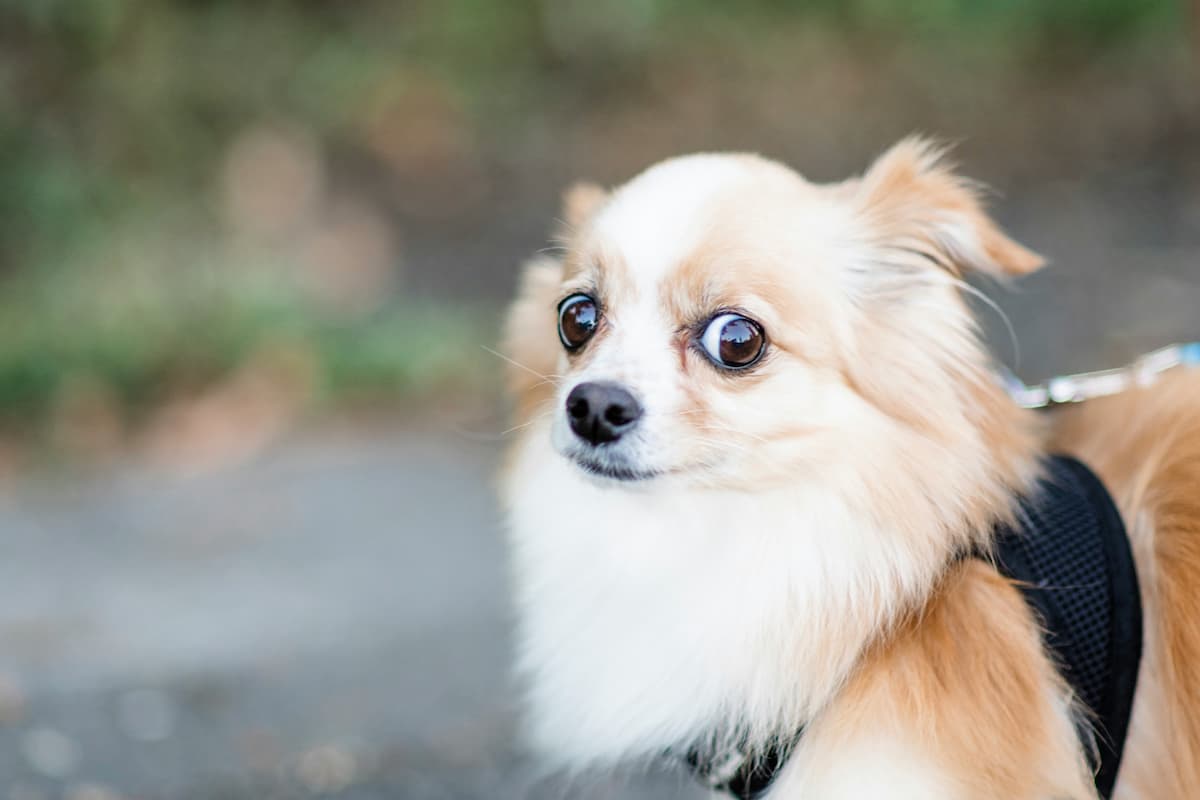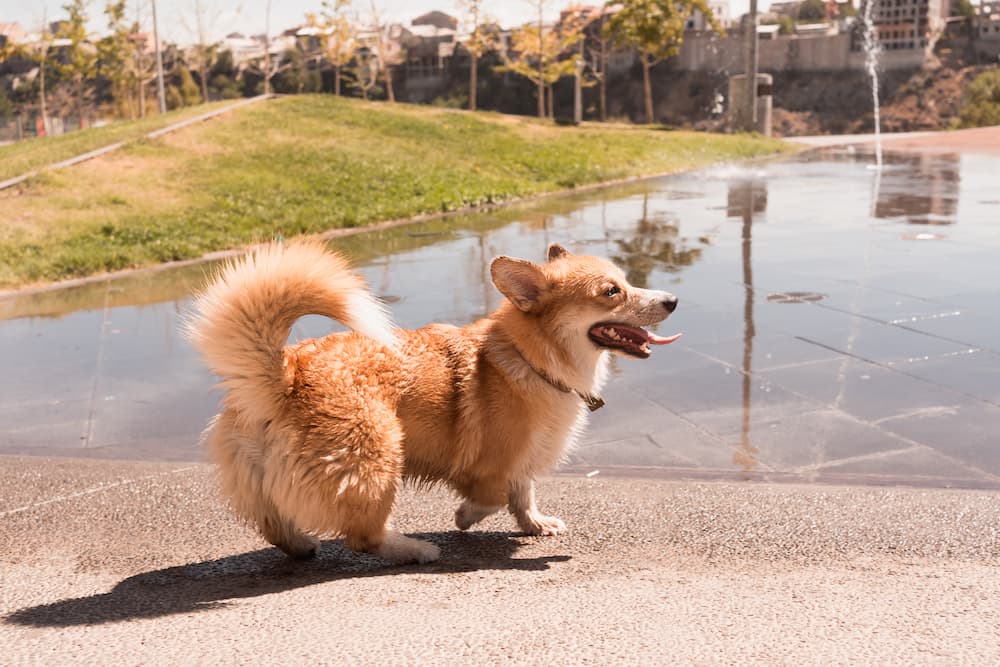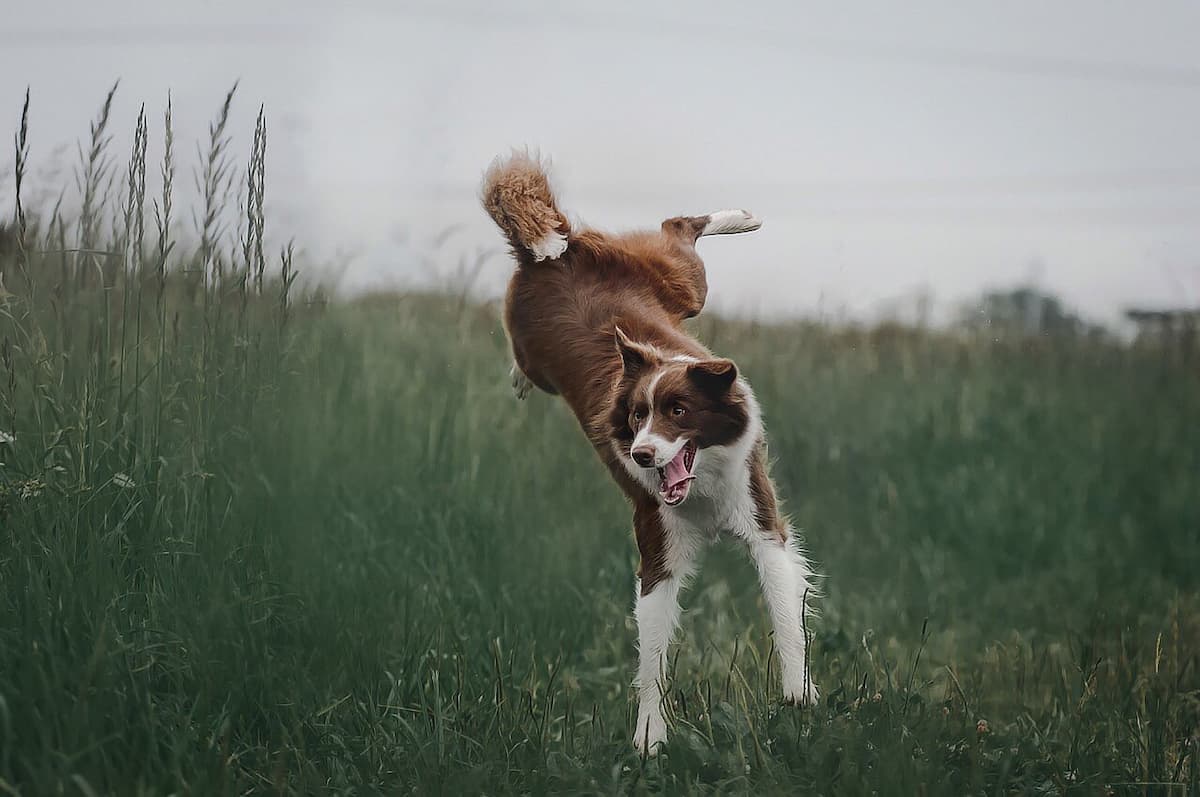You’re lounging on the couch, engrossed in the latest episode of your favorite TV show, when suddenly, your dog bursts into the room like a four-legged furry tornado.
Tail wagging furiously, they give you a sly side-eye before launching into an unexpected and rather peculiar dance move.
Yes, you read that right – your dog just twerked on you!
As baffling as it may be, this intriguing canine behavior has left many of us scratching our heads and wondering: why in the world do dogs twerk on you?
This article will answer your bizarre question.
Why Do Dogs Twerk on You?
Twerking, which involves a dog vigorously shaking its rear end (often accompanied by a wagging tail and an exuberant facial expression), can seem incredibly bizarre to witness in anything that isn’t human, but rest assured that it is a completely natural behavior for our four-legged pals.
While it may seem a bit odd to us humans, this behavior is deeply ingrained in their instincts.
One theory suggests that dogs twerk on their owners as a form of communication.
Dogs primarily use body language to express their emotions, intentions, and desires.
Twerking, as comical as it may appear, serves as a method for your pooch to communicate a variety of messages.
It can be a form of playfulness, a way to seek attention or affection, or an expression of excitement.
By sharing their scent with you and feeling the warmth of your body, they’re reinforcing their bond and marking you as part of their territory.
It’s their way of saying, ”Hey, you’re mine, and I love you!”
The booty shake can also be seen as a social bonding mechanism.
When dogs engage in this playful behavior, it releases endorphins in their brains, making them feel happy and excited.
It strengthens the bond between dogs and humans, as shaking their booties often elicits laughter, affectionate pats, and playful interactions from their human counterparts.
Additionally, dogs are incredibly perceptive and sensitive to human emotions.
As such, the booty shake is not only a way for them to express joy, but it’s also a part of their natural instinct to mirror our emotions and receive positive reinforcement.
When they see us smiling or laughing, they shake their booties even more enthusiastically, aligning their behavior with our own.
By wiggling their bodies and making eye contact, they are effectively saying, “Look at me! I want to interact with you!” In response, you can engage in interactive play by throwing a toy, initiating a game of chase, or simply giving them a belly rub.
This exchange helps foster a stronger bond and deepens the connection between you and your furry friend.
Dogs are also playful creatures by nature, and the booty shake is just another way for them to express their exuberance.
It’s their way of letting loose and showing their zest for life.
Through this contagious motion, dogs invite us to participate in their joy and engage in playful activities, whether it’s a game of fetch or a rollicking wrestling match.
Furthermore, the booty shake can also serve as a form of stress relief for dogs.
When they’re feeling anxious or overwhelmed, engaging in this rhythmic movement helps release pent-up energy and provides a sense of relaxation.
It’s their version of a stress-relieving dance!
Finally, twerking may also be related to your dog’s sense of smell.
Dogs experience the world through their noses and twerking on you can be an opportunity for them to gather information about you or other scents in close proximity. It’s not uncommon for dogs to investigate their surroundings by rubbing their bodies against objects, including you. So, next time your dog starts twerking on you, it might be their clever way of familiarizing themselves with your scent or simply satisfying their curious nature.
Embrace their inquisitiveness and give them a gentle pat to show your understanding.
Keep in mind that not all twerking is created equal.
It’s essential to consider the overall context of your dog’s body language and behavior to fully understand their intentions.
For instance, if your dog seems relaxed, has loose, wiggly movements, and maintains eye contact with you during the twerking, it’s likely they’re simply seeking attention or expressing their joy.
On the other hand, if their body appears tense or they display signs of fear or aggression, it’s best to consult with a professional dog behaviorist to ensure your pet’s well-being.
Remember, the key to ensuring a positive twerking experience with your dog is to approach it with a light-hearted attitude and a sense of understanding.
Embrace their quirky behavior, build on your bond, and make the most out of these entertaining moments.
So, the next time your four-legged friend decides to break out their twerking moves, embrace the opportunity to share a joyful and playful moment together!
FAQ
Q: How is dog twerking related to showing affection?
A: Dogs have a variety of ways to express their love, and twerking is just one of them.
It’s similar to how they greet each other by sniffing behinds, a behavior deeply rooted in their pack mentality.
By twerking (or rather, rubbing their rear end against you), they’re leaving their scent and saying, “Hey, you’re one of us, and I like you!”
Q: Does this mean my dog thinks I’m another dog?
A: Not exactly. While dogs perceive humans differently from their canine companions, they still see us as part of their family or pack.
When they twerk on you, it’s simply their way of including you in their “social circle.”
Q: Is there anything else that might trigger the twerking behavior?
A: Definitely! Apart from showing affection, dogs may also twerk when they’re excited or overjoyed to see you.
It’s their way of expressing enthusiasm and happiness.
You’ll often witness this adorable dance move when you return home after being away for a while.
Q: Can I discourage my dog from twerking if I find it uncomfortable?
A: Absolutely! Every dog is unique, and some might have a stronger inclination for twerking than others.
If you find their enthusiastic hip-shaking a bit overwhelming, you can gently redirect their behavior by offering alternative ways to show affection.
For example, you can teach them a handshake, a high-five, or a chest bump.
Q: Are there any potential concerns linked to dog twerking?
A: Generally, dog twerking is harmless and usually indicates a happy and well-adjusted pup.
However, if you notice your dog excessively twerking or experiencing discomfort while doing so, it might be worth consulting with a veterinarian. They’ll be able to check for any underlying health issues that could be causing the behavior.
Q: Can I twerk back at my dog?
A: While it might be tempting to engage in a dance-off with your furry friend, it’s important to remember that dogs have their own unique ways of communicating.
Twerking back at them may confuse or even startle them.
It’s best to stick to methods of communication they understand and appreciate, such as gentle petting and praising.
Q: Is dog twerking something to be worried about?
A: Definitely not! In fact, dog twerking is often a heartwarming gesture that shows your pup feels comfortable and connected to you.
It’s just one of the many ways dogs express their love and excitement.
So, embrace the twerk and enjoy the companionship of your four-legged friend!
Closing Remarks
And that is fascinating reason why dogs twerk on you.
Whether it’s an expression of affection, a way to mark their territory, or simply seeking attention and belly rubs, twerking on their favorite humans appears to be an instinctive behavior for our furry friends. Dogs truly are unique creatures with their own quirky ways of showing love and connection.
Next time your furry companion decides to give you a little twerk dance, remember not to be offended or confused.
Instead, embrace the moment, give them a pat on the head, and let them know you’re cool with their unique expression of love.












